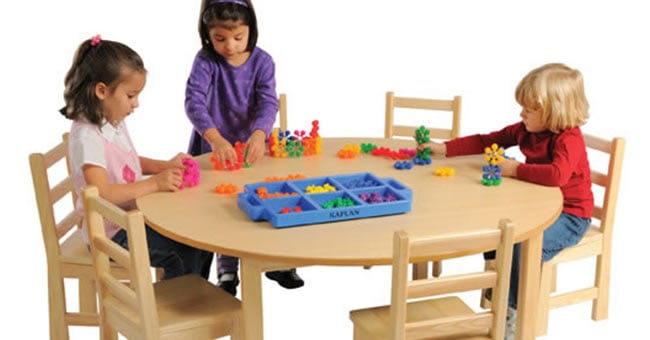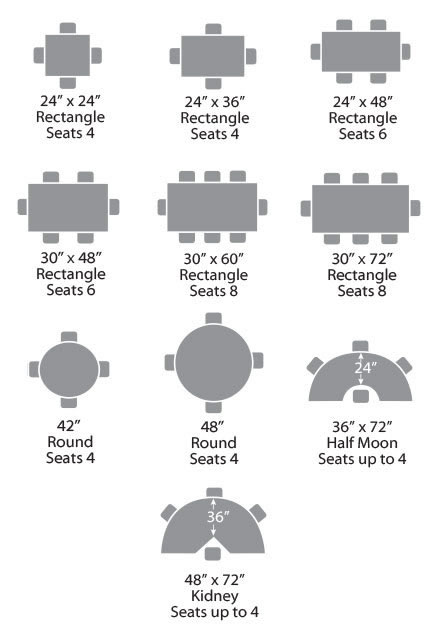
Tables are often thought of as "just part of the classroom," but you may be surprised at how table styles can impact children's learning and the overall learning environment. Some table styles better support group work while others are great for art projects or fun activities. Which table style works best for your classroom and for your students really depends on the age of your students, the overall size of your classroom, how many students you have in your care, and what the table will be used for in your learning environment.
Kaplan Early Learning Company offers tables in a variety of styles. Browse the following buying guide for information about each style and a few tips on how you can select the table style that works best for your classroom and students:

Square Tables
Kaplan offers a square table style that will seat up to four students. The 24" x 24" measurements make square tables a great choice if you're looking for an activity table or a standard table style for children to sit at in groups. Children will be sitting closer together with a standard square table, though, which means they may be more likely to talk during quiet times. If you want several smaller tables in the classroom instead of one or two larger tables, this table style would also work well for that purpose.
Rectangle Tables
Depending on whether you want to comfortably seat four, six, or eight students at a table, Kaplan has a selection of rectangle tables available for you to choose from. A rectangle table that seats four will give children a little more room than the standard square table. Larger rectangle tables allow more room for additional seats, which means that you won't need as many tables for your classroom. Rectangle tables serve well as activity tables, standard classroom tables, or large group tables. They also work well for snack and mealtimes.
Round Tables
Kaplan offers two tables with a round table style. Both table styles comfortably seat four with the only difference being whether you want a table that is 42" or 48" in diameter. Round tables are not as popular as square and rectangle tables, but they work well as an activity table or standard classroom table. Round tables are also great for small groups to use, because each student is able to contribute equally to a central project or activity. Children also have more room since chairs can be more spaced out around the table.
Half Moon and Kidney Tables
Tables that are shaped as a half moon or kidney work well as a conference table for situations in which a teacher may need to help a small group of students or have a conversation with parents. They also work well as a table for children to sit and listen as a teacher reads them a book or shows them how to do an activity. Keep in mind that these two table styles wouldn't work well as a small group table. If a child sits on the side with just one chair, he or she may feel isolated from the group or have a difficult time participating with others at the table.
Tips for Selecting a Table Style
- Measure the space so you know what size table(s) will best fit there. Keep in mind that you need to leave plenty of room between tables to let children comfortably slide their chair in and out and for you to walk around and observe and interact with students.
- Decide how many tables you need for the space. Whether you need several smaller tables or one or two larger tables will impact which styles will best work for your classroom and students.
- Determine the purpose of the table(s). Do you need an activity table or a standard table for children to use for a variety of purposes? Or do you need a conference table to help students or meet with families?
- Think about which table style students will enjoy more and which will best benefit the classroom learning environment. Do you want tables that support small group interactions or ones that give children a little more room to participate in activities and individual projects? Or do you want tables that support larger group interactions?
For more information about table styles offered by Kaplan and other classroom setup topics, browse through the resources listed below or contact us to ask any questions you may have.
